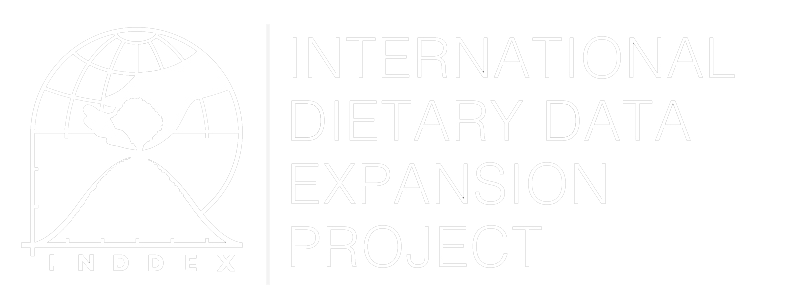Summary
Variation in an individual's diet is associated with the intake of adequate energy and essential nutrients; increasing variety in one’s diet is recommended in most dietary guidelines globally (Ruel, 2003). Dietary diversity is especially important among populations with diets based on starchy staples where micronutrient deficiency is more likely (Ruel, 2003). The most common method of measuring dietary diversity for a household or individual consists of assessing the variety of different food groups consumed in a specific recall period; information on the quantity of foods consumed is not gathered. Indicators of dietary diversity are considered to be useful as measures of impact for programs designed to address nutrition through agricultural pathways.
Dietary diversity can be measured at either the household or the individual level and higher scores represent a more diverse diet. For households, a higher score is an indicator of increased economic access to a varied diet for household members (though the indicator does not reflect intra-household dietary patterns). Household dietary diversity has been shown to be associated with caloric and protein adequacy and household income (Swindale & Bilinksy, 2006).
Individual dietary diversity indices, specifically the Minimum Dietary Diversity for Women (MDD-W) and the Minimum Dietary Diversity (MDD) for children 6-23 months, have been shown to be a rough proxy for diet quality and nutrient adequacy (FAO & FHI, 2016; Moursi et al., 2008). While there is consensus around the significance of dietary diversity, there are multiple approaches to measurement with varied food groups and recall periods (Table 1).
Table 1
|
Dietary Diversity Score |
Data collection level |
Number of food groups |
Recall period |
Purpose |
Universal cut-off? |
Validated as a proxy measure of… |
Promoted by |
|
Household level measures |
|
||||||
|
Household |
12 |
24 hours |
Household dietary diversity and proxy for household food access and socioeconomic status |
No |
Socioeconomic Status |
FAO |
|
|
Food consumption score (FCS) |
Household |
8 |
7 days |
Measures "usual" household consumption; Standardized food group weights are used to construct index. |
Yes |
Not Validated |
WFP |
|
Individual level measures |
|
||||||
|
Minimum Acceptable Diet (MAD) |
Infant/child (6-23 months) |
8 (from MDD) |
24 hours |
Measures both minimum dietary diversity and minimum meal frequency. |
Yes |
Not Validated |
WHO |
|
Infant/child (6-23 months) |
8 |
24 hours |
Measures infant and child dietary quality and adoption of complementary feeding practices |
Yes |
Nutrient Adequacy |
WHO |
|
|
(Individual) Women 15-49* |
10 |
24 hours |
Dichotomous indicator that measures the dietary diversity of an individual woman; associated with nutrient adequacy in many contexts and can be used as a proxy for overall diet quality |
Yes |
Nutrient Adequacy |
WHO, USAID |
|
|
Women’s Dietary Diversity Score (WDDS/IDDS)** |
(Individual) Women 15-49* |
9 |
24 hours |
Continuous indicator that was the basis for the MDD-W (sometimes referred to as the Individual Dietary Diversity Score (IDDS)) |
No |
Superseded by MDD-W |
|
Dietary diversity indicators can be constructed using a specific module relevant to that dietary diversity indicator (e.g. Household Dietary Diversity module, MDD module for children from 6-23 months). In addition, the various dietary diversity scores can be constructed from existing data, as long as the recall period is aligned. Some potential data sources include Household Consumption and Expenditure Surveys (HCES), Demographic and Health Surveys (DHS) & Multiple Indicator Cluster Surveys (MICS), or Food Frequency Questionnaires. More generally, dietary diversity modules are frequently included as short modules in multi-purpose household survey questionnaires.
Dietary diversity scores are not direct measures of consumption and not all have been validated as proxy measures of nutrient adequacy. A significant drawback of the household-level indicators is that scores do not provide information on whether the household dietary diversity is shared equally by all individual members of the household. For more precise population measures of nutrient adequacy by age/sex groups individual-level data from 24-hour Dietary Recalls or Weighed Food Records should be used.
Strengths
- Relatively easy to use and to integrate as a short module into surveys
- Requires fewer resources than attempting to measure quantitative dietary consumption data for nutrient adequacy
- Calculating the scores is a straightforward process and training others to collect data does not require a large amount of time
- Dietary diversity scores can give an idea of what types of foods are consumed
Weaknesses
- Modules usually require tailoring to specific contexts
- Scores do not provide detailed information on quantitative dietary intakes and are not a direct measure of nutrient adequacy; the cut-offs for the MDD-W do not predict nutrient adequacy in all contexts for all population groups
- Household-level dietary diversity scores do not provide information on individual household members and cannot be used to draw conclusions about individuals
